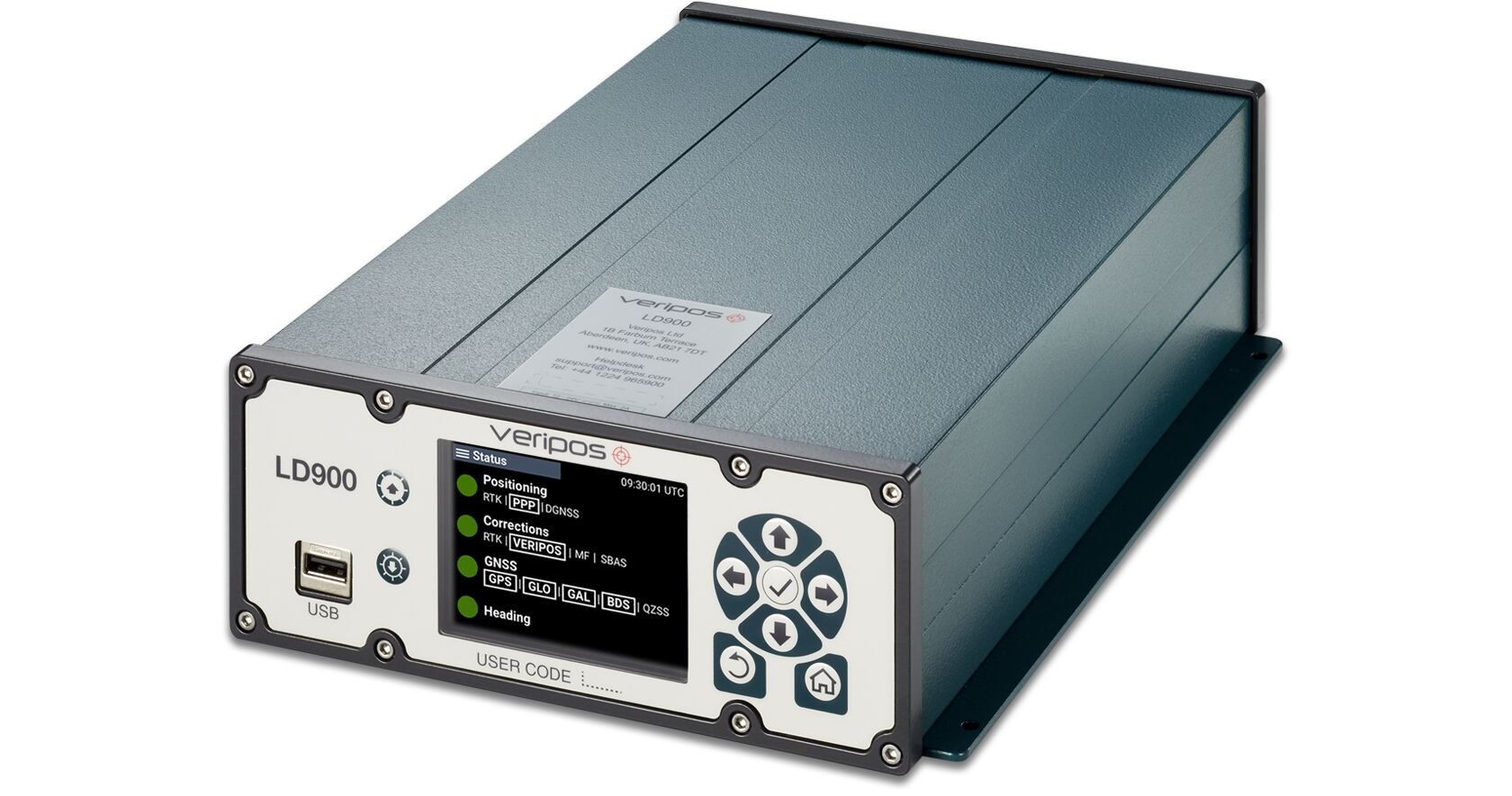Veripos offers LD900 quad-band GNSS receiver for marine environments
Veripos has released the LD900, a quad-band GNSS receiver capable of tracking GPS, GLONASS, BeiDou, Galileo and QZSS constellations to provide reliable and accurate positioning. Access to multiple GNSS signals allow for better satellite availability and reduce the impact of satellite masking or blockage, which can affect positioning.
LD900 also receives L-band signals on multiple channels, providing access to the worldwide independent correction links and services provided by Veripos. With correction data available simultaneously from up to three correction satellites, the impact of satellite masking can be minimized to ensure reliable reception of correction data. Using the independent L-band RF input on the LD900 allows the connection of a dedicated L-band antenna ensuring optimal reception of correction services, especially at high latitudes, the company said.
Veripos provides accurate and reliable positioning for all marine applications via their redundant positioning and multi-frequency precise point positioning (PPP) Apex and Ultra services.
The Apex5 correction service utilizes all GNSS constellations delivering 5cm positioning accuracy for use in the most demanding offshore applications. Real-time kinematic (RTK) corrections can be utilized by the LD900 for applications where this service is required.
The intuitive color display and navigation menu makes setup, configuration and system status monitoring simple. The display also helps troubleshoot issues with the LD900 allowing faults to be quickly diagnosed and resolved. The LD900 can also be configured remotely through the Veripos Quantum software.
Features and Benefits
- Supports decimeter-level multi-constellation positioning with Veripos Apex and Ultra PPP correction services
- Multi-channel L-band allows simultaneous tracking of 3 Veripos correction service satellites
- Independent L-band RF input
- Easy-to-use, intuitive, color display for simple configuration and monitoring
- Advanced signal filtering mitigates the effects of interference from other transmitters
- Optional ALIGN GNSS heading solution
- Optional MSK Beacon receives corrections from IALA marine radio beacon network
- Automatic 72-hour rolling data log for incident support

















Follow Us